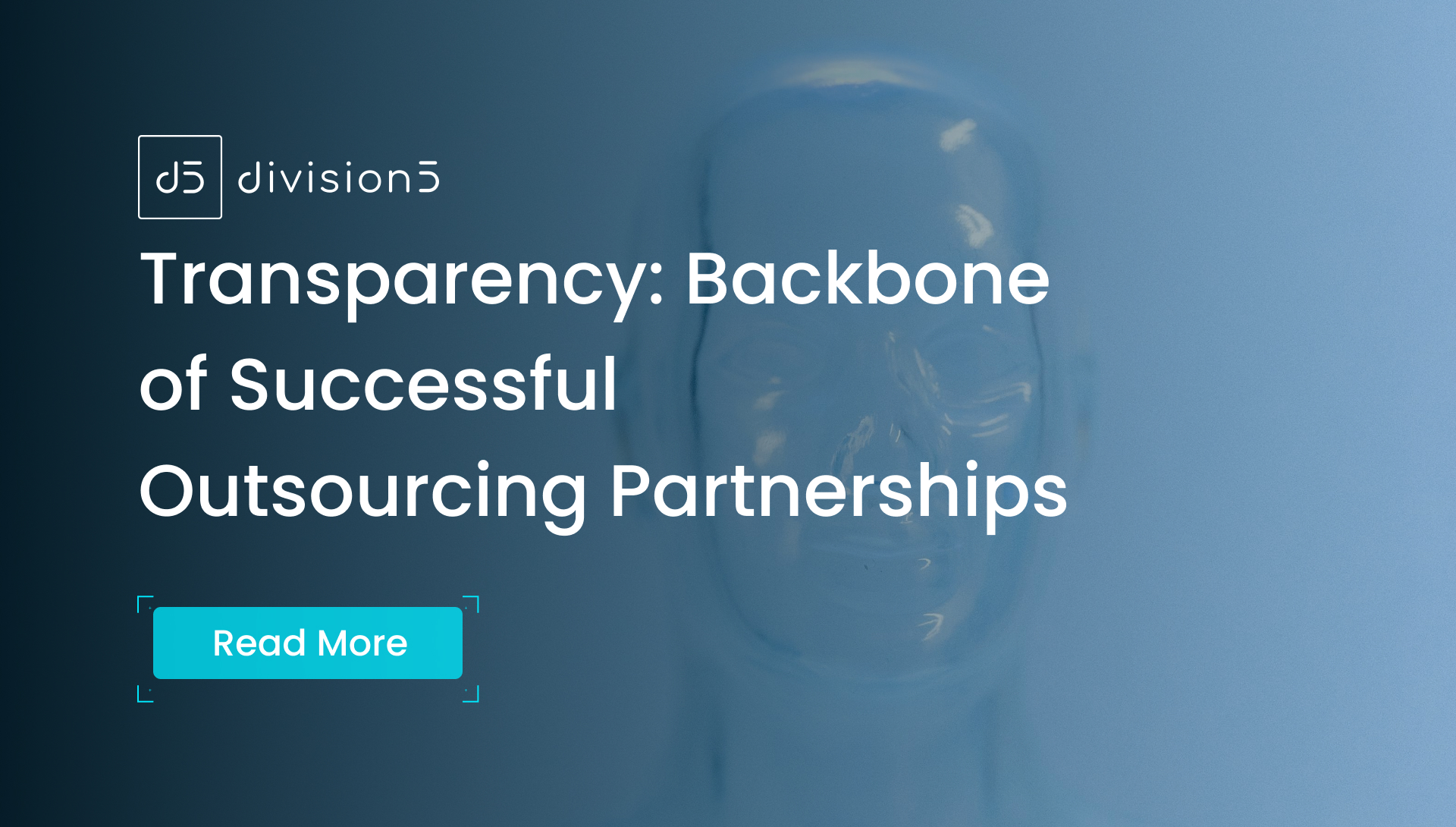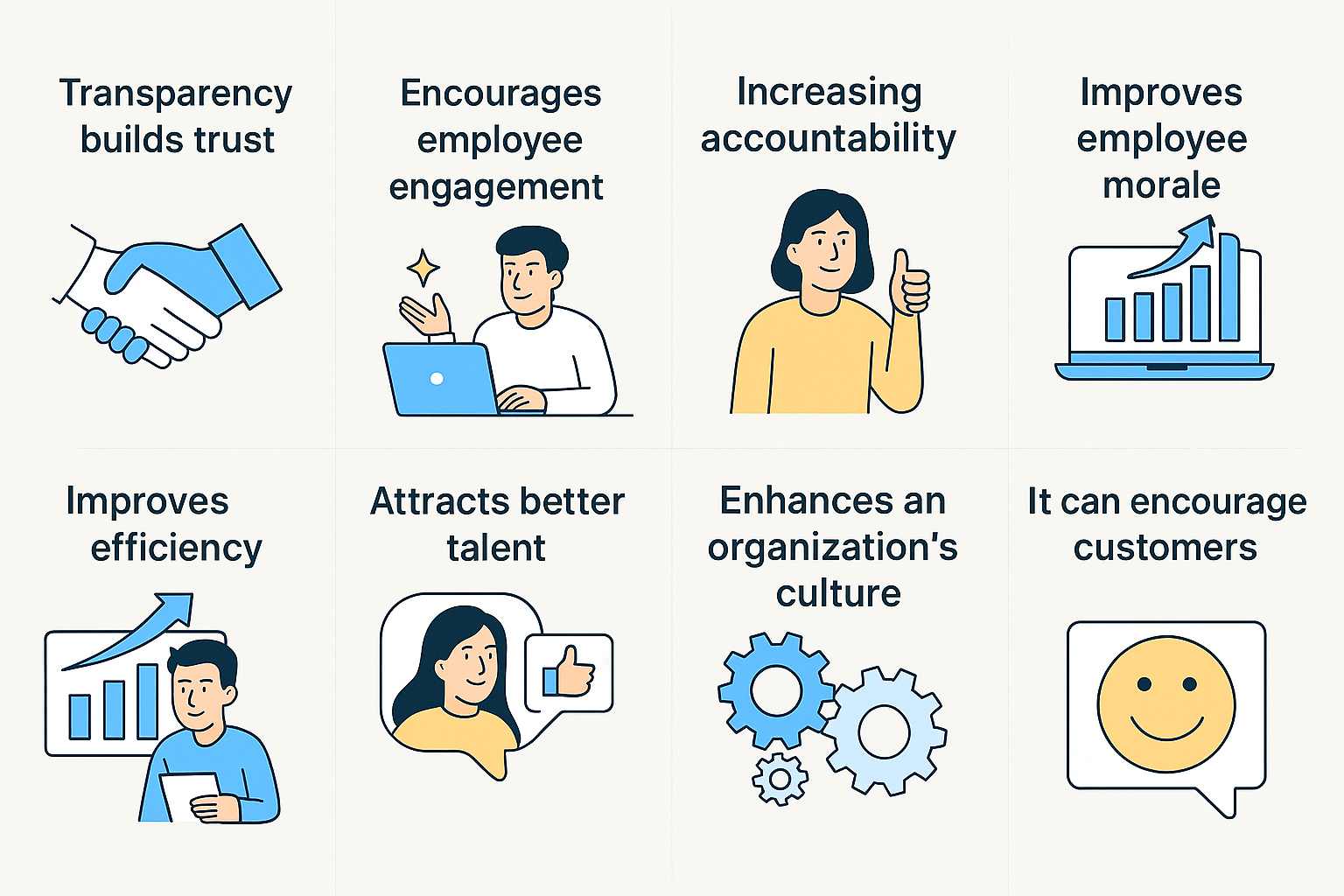
The importance of transparency in outsourcing
After more than a decade navigating the dynamic world of outsourcing and helping businesses like yours scale, at division5 we’ve seen firsthand what truly separates a smooth, successful partnership from a frustrating, stalled project. It’s not just about finding talent or cutting costs – though those are important. The real game-changer, the element that consistently underpins the most fruitful collaborations, is transparency. It might sound simple, but in an industry where teams can be continents apart, this single factor can make or break your outsourcing venture.
Outsourcing is a powerful strategic move for companies aiming to scale operations, optimize budgets, and access specialized skills they might not have in-house. The benefits are compelling. But while the promise is alluring, the path to realizing those benefits is paved with open communication. Without it, even the most well-intentioned projects can veer off course, leading to missed deadlines, strained relationships, and eroded trust.

So, why is transparency so critical?
How can you ensure it’s at the heart of your outsourcing strategy?
At its core, transparency is defined as “a lack of hidden agendas or conditions, accompanied by the availability of full information required of collaboration, cooperation and collective decision-making”. Companies that embrace this value find it leads directly to trust, which in turn leads to success. In the context of outsourcing, this means being open and sharing information so everyone understands what’s going on, building a foundation of trust between clients and service providers.
Laying the Groundwork: Transparency from Day One

When you decide to outsource, you’re entrusting a significant piece of your business to an external team. Often, this team is in a different city, country, or time zone. This inherent distance means that clear, unambiguous communication isn’t just nice to have—it’s essential. From the very first conversation, even before a contract is signed, both parties must be committed to transparency.
- Clear Expectations & Scope:
Based on our 10+ years of experience, ambiguity is the primary source of friction. Just like an airline pilot and air traffic control need clear communication protocols to ensure safe air travel, successful outsourcing requires defining responsibilities and communication from the outset.
Clearly outlining expectations, responsibilities, deliverables, and the precise scope of work is paramount. This ensures your outsourcing partner genuinely understands your business goals, priorities, and what success looks like for you. This initial clarity minimizes misunderstandings and helps the outsourcing partner understand the client’s goals and desired outcomes. - Open Information Sharing:
For an outsourced team to truly act as an extension of your own, they need access to the right information. This means providing comprehensive project briefs, accurate data, relevant documentation, and timely updates.
Hoarding information or providing incomplete specs forces your partner to guess, leading to inefficiencies, delays, and work that misses the mark. Transparent information flow ensures everyone is working from the same playbook, ensuring any issues or changes are immediately flagged and addressed.
Navigating the Journey: Transparency in Operations and Risk Mitigation
Once the project is underway, transparency remains crucial for smooth execution and proactive problem-solving.
- Accountability in Action:
Transparency goes hand-in-hand with accountability. When processes and progress are visible, accountability naturally follows.
Regular, honest updates—whether daily check-ins, weekly reports, or access to project management tools—keep everyone aligned.
For you, the client, this means reduced guesswork and a clear view of how your investment is translating into results.
For the outsourcing team, it’s an opportunity to showcase their diligence and expertise, building credibility.
Clear, consistent reporting also helps prevent confusion and allows for early identification of problems.
- Proactive Risk Management:
No project is entirely without its hurdles. However, a transparent environment means potential risks—be they technical challenges, resource constraints, or shifting priorities—are flagged early.
Our experience shows that open discussion about potential roadblocks allows both sides to collaboratively develop mitigation strategies before minor issues escalate into major crises.
A lack of transparency can turn manageable risks into significant issues, potentially leading to security risks like data breaches, legal problems, or poor quality work.
This shared approach to problem-solving strengthens the partnership and reduces disruptions.
Building Bridges, Not Walls: Transparency in Financials and Fostering True Partnerships
Transparency extends deeply into the financial and relational aspects of outsourcing, fostering the trust necessary for long-term success.
- Financial Clarity Breeds Confidence:
Few things erode trust faster than unexpected bills or opaque pricing structures. Clear, upfront communication about costs, fees, payment schedules, and how any potential additional expenses will be handled is vital.
When clients understand how their budget is being utilized, and partners are straightforward about their pricing, it builds a foundation of financial stability and mutual respect.
This openness prevents unexpected bills, which can damage even the most successful project.
- From Transaction to Transformation:
Ultimately, transparency transforms an outsourcing arrangement from a mere transaction into a genuine strategic partnership.
When both client and provider operate with honesty, openness, and a commitment to clear communication, it cultivates an environment of mutual respect and shared purpose.
This deeper level of trust, built over time through consistent transparency, is what we’ve seen lead to greater innovation, higher quality outcomes, and truly successful, sustainable collaborations.
Transparency also fosters a healthier work culture and strengthens relationships, making employees feel like they are part of something bigger.
It can even increase customer loyalty, with studies showing that 94% of customers would stay loyal to a transparent brand.
Frequently Asked Questions (FAQs) - Transparency in Outsourcing
Transparency: Not Just a Buzzword, It’s Your Outsourcing Lifeline
In our decade-plus journey at division5, we’ve learned that the importance of transparency in outsourcing simply cannot be overstated. It’s the connective tissue that holds collaborations together, ensuring that expectations are crystal clear, challenges are navigated proactively, and trust isn’t just established but continually reinforced. In an industry where communication gaps can translate directly into costly errors and missed opportunities, transparency isn’t just a “best practice”—it’s a fundamental necessity. In fact, a lack of communication and transparency can result in poor project outcomes and client dissatisfaction, damaging the outsourcing company’s reputation.
For any company looking to unlock the full potential of outsourcing, investing in a culture of clear, open, and honest communication from the very beginning isn’t just advisable; it’s the surest path to a rewarding and impactful partnership.
Ready to build an outsourcing partnership founded on clarity and trust? Let’s talk about how our transparent approach can make your team extension a resounding success. Contact us today!